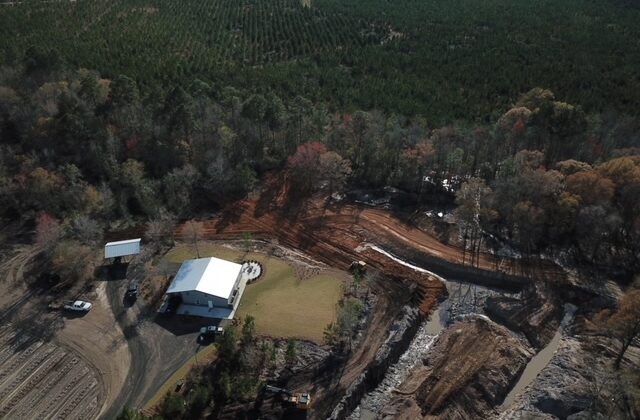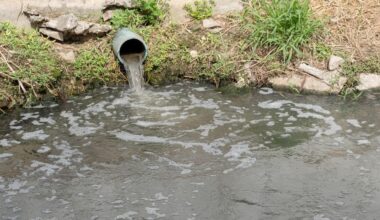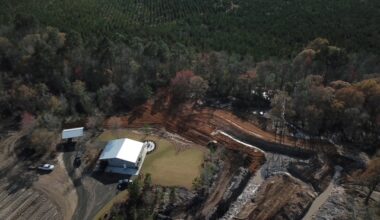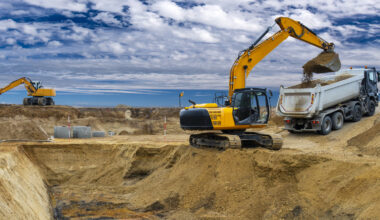When it comes to construction, clearing, and land remediation projects, adequate soil drainage and erosion control are paramount. Failure to address these crucial aspects can result in environmental damage, compromised project stability, and potential legal implications. In this blog post, we will explore the significance of erosion control, discuss essential measures such as silt fence installation, drainage control, and site restoration, and provide real-life examples to illustrate their importance.
I. The Significance of Erosion Control:
Erosion control refers to the implementation of measures aimed at preventing the displacement of soil particles caused by wind, water, or other natural factors. It plays a vital role in various projects, including construction, land clearing, and remediation. Here are a few key reasons why erosion control is crucial:
1. Environmental Protection:
Uncontrolled erosion can lead to the sedimentation of water bodies, adversely impacting aquatic ecosystems and reducing water quality. Sediment-laden runoff can also harm nearby vegetation and wildlife habitats. By implementing erosion control measures, we can protect the environment and minimize ecological disturbances.
2. Project Stability:
Erosion can weaken the foundation of construction projects, compromising their structural integrity. Adequate erosion control helps maintain stability by preventing soil movement, ensuring the longevity and safety of structures.
3. Legal Compliance:
Many jurisdictions have regulations in place that require erosion control measures to be implemented during construction and land projects. Failure to comply with these regulations can result in penalties, delays, and potential project shutdowns. By prioritizing erosion control, you can avoid legal issues and maintain a smooth project progression.
II. Essential Measures for Erosion Control:
To effectively manage erosion and promote soil drainage, several key measures should be implemented. Here are some crucial techniques used in erosion control:
1. Silt Fence Installation:
Silt fences act as physical barriers that intercept sediment-laden runoff, preventing it from leaving the site. They consist of geotextile fabric supported by posts and are strategically placed to capture sediment and allow water to flow through. Proper installation and maintenance of silt fences are essential for effective erosion control.
2. Drainage Control:
Controlling surface water and managing its flow is critical in erosion control. Techniques such as constructing berms, swales, or installing drainpipes can redirect water away from vulnerable areas, reducing the risk of erosion. Proper grading of the site also facilitates adequate drainage.
3. Site Restoration:
After completing a project, site restoration helps stabilize the soil and promote vegetation growth. This can involve activities such as reseeding, planting native vegetation, installing erosion control blankets, or establishing bioengineering techniques. Restoring the site’s natural state helps prevent erosion and supports ecological balance.
Personal Example:
Imagine a scenario where a housing development is being constructed on a sloping terrain near a river. Without implementing proper erosion control measures, heavy rain could cause significant erosion, leading to soil runoff into the river. This sedimentation could harm the aquatic life and impact the water quality downstream, affecting not only the environment but also the neighboring communities that rely on the river as a water source. By installing silt fences, controlling drainage, and implementing site restoration techniques, the housing developer can ensure that the project proceeds smoothly, minimizing environmental impact, and maintaining the stability of the structures.
FAQ:
Q1: What are the consequences of failing to implement erosion control measures?
A1: Failing to implement erosion control measures can result in sedimentation of water bodies, ecological damage, compromised project stability, legal consequences, and delays in project completion.
Q2: How often should silt fences be inspected and maintained?
A2: Silt fences should be inspected regularly, particularly after heavy rainfall or significant site disturbances. Maintenance, such as removing accumulated sediment and ensuring proper tension of the fence fabric, should be performed as needed.
Q3: Can erosion control techniques be applied in both urban and rural areas?
A3: Yes, erosion control techniques are applicable in both urban and rural areas. Whether it’s a construction site, a residential area, or agricultural land, implementing erosion control measures is essential to mitigate the risk of erosion and protect the environment.
Conclusion:
In construction, clearing, and land remediation projects, erosion control plays a pivotal role in safeguarding the environment, ensuring project stability, and complying with regulations. By understanding the significance of erosion control and implementing measures such as silt fence installation, drainage control, and site restoration, we can minimize environmental impact, protect valuable resources, and maintain project integrity. Let’s prioritize erosion control to create a sustainable and resilient future for our construction and land projects.






